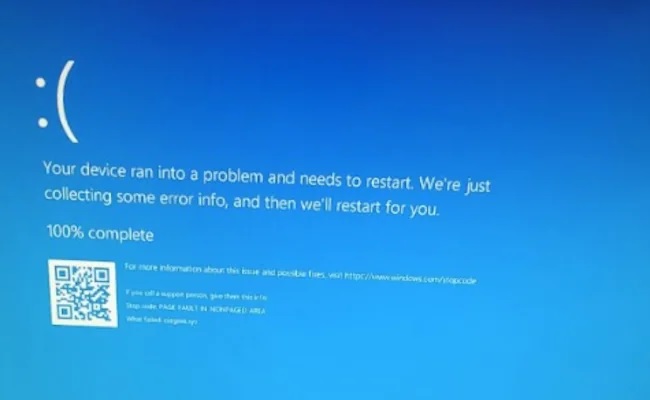Patients are waiting over three hours to be treated at hospital emergency departments, that’s the longest it’s ever been. A task force was established to help tackle the growing problem, as a deal with Paramedics over pay also edges closer.
Breaking News: NSW Taskforce Takes Action to Slash Emergency Department Wait Times
In response to the urgent need to address the challenges faced by emergency departments in New South Wales (NSW), the Minns Labor Government has established the ED Taskforce. Comprised of dedicated health workers and NSW Health officials, this taskforce aims to enhance efficiency within EDs and reduce unnecessary presentations, address bed block, improve patient flow, and enhance the overall patient and staff experience.
NSW has the highest number of ED presentations in Australia, with a significant proportion of cases that could be treated in primary or aged care settings. To alleviate strain on hospitals, the government is implementing innovative initiatives, such as urgent care services, pharmacist prescribing, and virtual care.
Led by Minister for Health, Ryan Park, the ED Taskforce is committed to achieving timely care and treatment for patients.
Key Takeaways
- The NSW Taskforce, established by the Minns Labor Government, is composed of health workers and NSW Health officials, with representatives from various local health districts and specialty networks.
- The Taskforce’s focus is on reducing unnecessary presentations, addressing bed block, improving patient flow, and enhancing patient and staff experience in the Emergency Department (ED).
- NSW reported the highest number of ED presentations in Australia, but also had the highest proportion of presentations seen on time and the second-highest proportion of planned surgeries completed within recommended timeframes.
- Almost half of all ED presentations were category 4 or 5 cases, and a BHI report revealed that 45% of patients in small rural hospitals believed they could have been treated by a GP or other health professional. The Taskforce aims to address this issue and divert unnecessary presentations to hospitals by implementing innovative initiatives such as rolling out urgent care services, empowering pharmacists to prescribe certain medications, increasing the use of virtual care, and making it easier for doctors to work in both GP and hospital settings.
Establishment of the ED Taskforce
The establishment of the ED Taskforce marks a significant step taken by the Minns Labor Government to address the issue of emergency department wait times in NSW. Comprised of health workers and NSW Health officials, the Taskforce includes representatives from various local health districts and specialty networks. Its primary objective is to identify and implement efficiencies aimed at reducing unnecessary presentations, addressing bed block, improving patient flow, and enhancing patient and staff experience in the ED.
This initiative comes in response to statistics that show NSW reported the highest number of ED presentations in Australia, with the highest proportion seen on time. Furthermore, a focus of the Taskforce is to address the proportion of cases that could be treated in primary or aged care settings, which contribute to the record demand on hospitals.
By implementing innovative initiatives such as urgent care services, empowering pharmacists, increasing the use of virtual care, and facilitating doctors’ ability to work in both GP and hospital settings, the Taskforce aims to divert unnecessary presentations to hospitals and improve access to care.
Minister for Health, Ryan Park, has prioritized improving wait times and access to care, acknowledging the importance of timely care and treatment for patients and expressing appreciation for the healthcare workers in NSW. It is clear that the establishment of the ED Taskforce is a vital step towards achieving these goals and improving patient health outcomes and experiences in hospitals.
Statistics on ED Presentations and Surgeries
To further understand the scale of the issue, it is important to examine the statistics on ED presentations and surgeries in New South Wales (NSW). According to recent data, NSW reported the highest number of ED presentations in Australia, with approximately 3 million cases.
However, there is some positive news as well, as NSW had the highest proportion of presentations seen on time, with 74% of cases being attended to within recommended timeframes. Additionally, the state had the second-highest proportion of planned surgeries completed within recommended timeframes, with a rate of 77.3%.
These numbers indicate that while there is still room for improvement, efforts are being made to address the issue of long wait times in EDs and ensure timely access to surgical procedures for patients in NSW.
Proportion of Cases That Could Be Treated in Primary or Aged Care Settings
Addressing the proportion of cases that could be treated in primary or aged care settings is a key focus of the NSW Taskforce’s efforts to slash emergency department wait times. Currently, almost half of all emergency department presentations fall into category 4 or 5 cases, which could potentially be managed in primary or aged care settings.
The Bureau of Health Information (BHI) has reported that 45% of patients in small rural hospitals felt they could have been treated by a GP or other health professional. To address this issue, the Taskforce is implementing initiatives to divert unnecessary presentations to hospitals and relieve pressure on primary care providers.
These initiatives include rolling out urgent care services across the state, empowering pharmacists to prescribe certain medications, increasing the use of virtual care, and facilitating doctors in regional health districts to work in both GP and hospital settings.
Innovative Initiatives to Relieve Pressure on Hospitals
One key aspect of the NSW Taskforce’s efforts to reduce emergency department wait times involves implementing innovative initiatives to relieve pressure on hospitals. These initiatives aim to divert unnecessary presentations to hospitals and improve access to care.
The taskforce is rolling out 25 urgent care services across the state, providing alternative options for patients who may not require emergency department treatment. Additionally, pharmacists are being empowered to prescribe certain medications, allowing patients to receive appropriate treatment without visiting the hospital.
Virtual care is also being utilized more extensively, enabling patients to access medical advice and consultations remotely. Furthermore, efforts are being made to make it easier for doctors in regional health districts to work in both general practice and hospital settings.
These initiatives are expected to alleviate the strain on hospitals and enhance the overall healthcare experience for patients.
Minister’s Priorities and Acknowledgements
Minister for Health, Ryan Park, has made improving wait times and access to care a top priority. He recognizes the urgent need for timely care and treatment for patients. Minister Park acknowledges and appreciates the dedication and hard work of the healthcare workers in NSW who are striving to provide quality care in challenging circumstances. He is committed to implementing seismic structural reforms to turn things around in the health system and improve patient health outcomes and experiences in hospitals.
Minister Park’s priorities align with the efforts of the NSW Taskforce, which is working diligently to identify and implement efficiencies, reduce unnecessary presentations, address bed block, improve patient flow, and enhance the overall patient and staff experience in the emergency department.
Taskforce’s Approach to Reducing Unnecessary Presentations
Implementing strategies to reduce unnecessary presentations is a key focus of the NSW Taskforce’s approach to slashing emergency department wait times. Recognizing that a significant proportion of cases could be treated in primary or aged care settings, the Taskforce aims to divert these presentations away from hospitals and relieve pressure on GPs.
The Taskforce has rolled out several innovative initiatives to achieve this objective, including the implementation of 25 urgent care services across the state, empowering pharmacists to prescribe certain medications, and increasing the use of virtual care.
Additionally, efforts are being made to make it easier for doctors in regional health districts to work in both GP and hospital settings. By redirecting unnecessary presentations and improving access to care, the Taskforce intends to enhance patient health outcomes and experiences in hospitals.
Strategies for Addressing Bed Block and Improving Patient Flow
The Taskforce’s strategy for addressing bed block and improving patient flow focuses on implementing measures to optimize hospital resources. By optimizing resources, the Taskforce aims to reduce the time patients spend waiting for a bed and improve the overall flow of patients through the hospital system.
One of the key initiatives is to improve communication and coordination between hospitals and other healthcare facilities, such as aged care facilities and primary care providers. This will help ensure that patients are transferred to the appropriate care setting in a timely manner, freeing up hospital beds for those who truly need them.
Additionally, the Taskforce is working on streamlining discharge processes and enhancing the capacity of hospital staff to manage patient flow efficiently. These strategies are aimed at reducing bed block and improving patient flow, ultimately leading to shorter wait times in emergency departments.
Enhancing Patient and Staff Experience in the ED
To improve the overall experience for both patients and staff in the ED, efforts are underway to enhance the efficiency and quality of care provided. Recognizing the importance of a positive patient experience, the NSW Taskforce is implementing measures to ensure timely and compassionate care.
This includes implementing strategies to reduce wait times, improve communication with patients, and enhance the overall environment in the ED. Additionally, the Taskforce is focusing on improving staff experience by addressing issues such as workload and burnout.
Efforts are being made to provide adequate resources and support for staff, as well as implementing training programs to enhance skills and knowledge.
Conclusion
The establishment of the ED Taskforce in NSW reflects the government’s commitment to addressing the challenges faced by emergency departments and improving patient experiences. Through innovative initiatives and strategies, such as increasing access to primary and aged care settings, implementing urgent care services, and utilizing virtual care, the taskforce aims to reduce unnecessary presentations and alleviate pressure on hospitals.
With the Minister for Health’s dedication to improving wait times and access to care, significant progress is expected in slashing emergency department wait times.
Albion News is a great place to find informative, up-to-date news articles. We provide a wide range of unique articles that offer an interesting perspective on current events from around the world and from various different sources. You can easily search for the topics that matter most to you and explore in-depth pieces that provide insight into the issues and important debates occurring today. Albion News helps you stay informed with carefully researched and credible stories!







